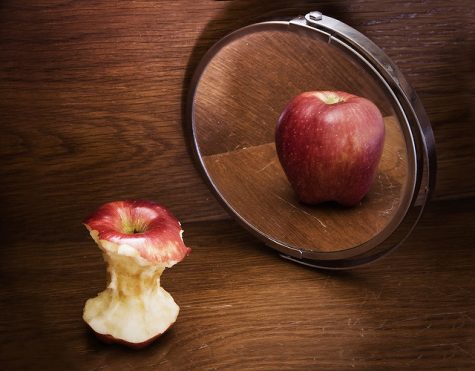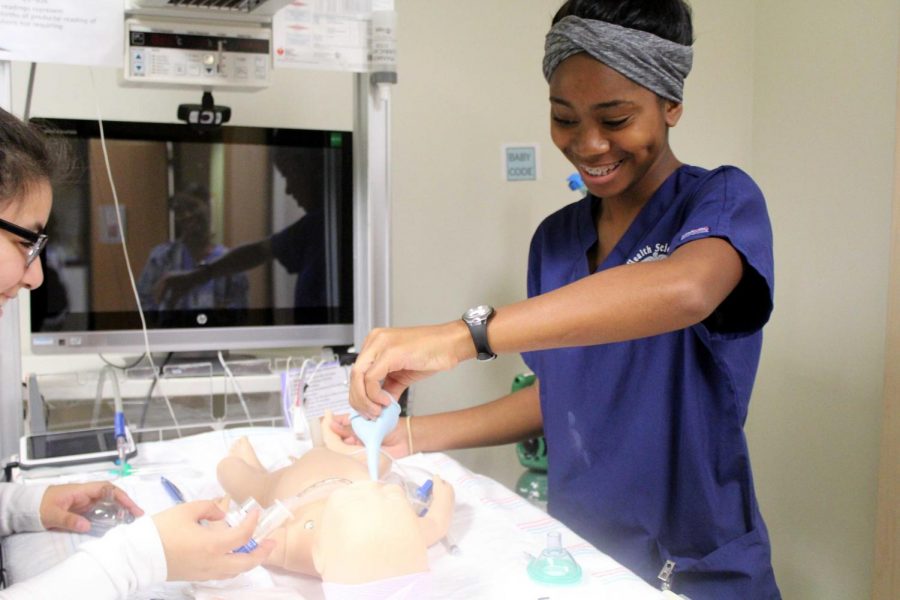Combating Eating Disorders
A figure isn’t a beauty or worth but an individuality.
Photo by: Darren Tunnicliff
The broken plates represents the enigma around food when it comes to eating disorders.
April 14, 2018
When morning came she opened her eyes, stood up and walked towards the bathroom while her body was still sore and aching from running the miles she was not supposed to. For there is nothing left in her, no meat, no fats, absolutely nothing, but her skin and bones. But still, she does the same thing every day, like the murmuration of whispers that tells her “you’re disgusting.” She wakes up then goes into her bathroom and steps onto the scale that has done nothing but show her numbers that she does not enjoy, for they were not small enough to be considered “pretty.”
Anyone who has seen and has read magazines consisting of models has surely thought of wanting the same body type, even just once. However, in recent years eating disorders have been more prominent in our society, but what are the causes and who’s to blame? Can society’s unrealistic standards be blamed for eating disorders?
One of the largest influence that causes people to develop an eating disorder is the pressure that people get, especially on women and girls through social media. Multiple studies have shown that people that are exposed to high image-driven sites are more prone to developing eating disorders. In 2011, a study in the University of Haifa examined 248 young females, ranging from the ages 12 to 19 and discovered that more exposure in social media’s resulted in higher rates of eating disorders. These women and girls were said to most likely to developed and struggle with self-image positivity, bulimia, and anorexia if their online time isn’t minimized by their parents or guardians because social media is everywhere.
Another issue around eating disorder is the trend of dieting and starving that have slowly become part of the norms in people’s lives. In the 1950’s, voluminous figures were seen to be healthy and beautiful but that has changed since the ‘70s, where the rise of anorexia epidemic increased rapidly, stated by the Harvard University Press, shown by the article “Starved to Perfection”. The rise of the epidemic was incomprehensible and was unknown at that time, it was not until the 1980’s where a psychiatrist at Baylor College fully analyzed it, also seen in “Starved to Perfection”.

An apple is used to metaphorically show the melancholy truth people with eating disorder see about themselves.
Lastly, the biggest affliction surrounding eating disorder is the ignorance around it. People are unaware that anxiety and depression can also be one of the main sources that impacts eating disorders, especially during puberty when people’s mindsets are more sensitive and vulnerable. The association “Anxiety and Depression Association of America” explains that eating disorders are connected to anxiety or even depression most of the time like anorexia and bulimia nervosa. In addition, the organization “Eating disorder Hope,” published an article “Connection: Between Anorexia and Anxiety Disorders” in 2015. It stated that a study was done to 2,500 individuals and 60 percent showed to have an anxiety disorder along with their diverse eating disorders.
Naturally, there’s psychologist, counselors, medications, and rehabilitation for people that are suffering from mental disorders. However, is it enough to just provide help and aid to these people? Isn’t it better if people came together to build stronger relationships with one another and increase their self-esteem and expand the gamut of beauty?
If people want to make a difference in eating disorders, they can start by promoting self-love and body positivity. Parents can train and encourage their children at a young age to see their self-worth and to respect others. It may not seem like much, but by making these small changes, people can affect someone positively and it’ll make a difference.
So, can we blame society’s unrealistic standard for eating disorders? Yes, we can in an aspect, because we make up our society and we are part of it. Instead of indicating we should stop promoting unnecessary negativity and show compassion towards each other because beauty standards are not permanent, but our bodies are.



























